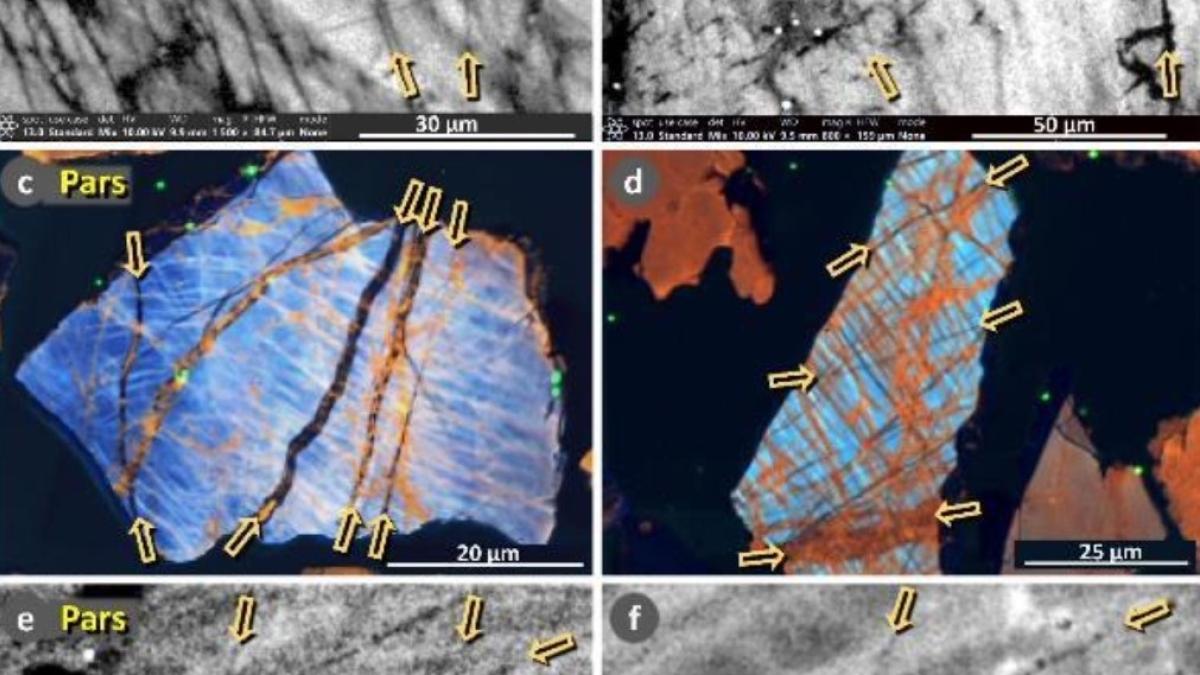The quartz samples support the idea that a fragmented comet hit Earth’s atmosphere 12,800 years ago, causing widespread climate change.
Among other things, this event led to a sudden reversal in the Earth’s warming trend and an anomalous subglacial period called the Younger Dryas.
UC Santa Barbara Professor Emeritus James Kennett and colleagues have reported traces associated with a cosmic airburst distributed over several separate locations in the eastern United States (New Jersey, Maryland, and South Carolina), materials that indicate the force and temperature involved in such an explosion. . Event, including platinum, microspheres, molten glass, and impact-broken quartz. The study appears in the journal ScienceOpen Airbursts and Cratering.
“What we discovered was that the pressures and temperatures were not characteristic of large impacts that form craters, but were consistent with so-called atmospheric ‘landing’ explosions that do not form many craters,” Kennett said in a statement.
Every day, the Earth is exposed to tons of celestial debris, in the form of tiny particles of dust.
At the other end of the scale are extremely rare and catastrophic impacts such as the Chicxulub event, which 65 million years ago caused the extinction of dinosaurs and other species. The 150-kilometre-wide impact crater can be found on the Yucatan Peninsula in Mexico.
And somewhere in between there are impacts that don’t leave craters on the Earth’s surface but are devastating nonetheless.
The shock wave from the 1908 Tunguska event flattened 2,150 square kilometres of forest, when the roughly 40-metre-wide asteroid hit the atmosphere about 10 kilometres above the Siberian taiga.
The comet believed to be responsible for the Young Dryas cooling event is estimated to be 100 kilometers across, much larger than the Tunguska body, and has been fragmented into thousands of pieces.
The layer of sediment associated with the airburst extends across much of the Northern Hemisphere, but can also be found in places south of the equator.
This layer contains unusually high levels of rare materials associated with cosmic impacts, such as iridium and platinum, and materials formed under high pressures and temperatures, such as magnetic microspheres (cooled metal droplets), molten glass, and nanodiamonds.
Researchers are particularly interested in the presence of shocked quartz, which is indicated by a pattern of lines, called lamellae, that exhibit pressure great enough to distort the crystalline structure of quartz, a very hard material.
The best evidence for cosmic impact is found in impact craters, however, linking impacted quartz to blasts of cosmic air has proven more challenging.
“In the extreme form, like when an asteroid hits the Earth’s surface, all the fractures are very parallel,” Kennett explained. In the world of cosmic airbursts, there are different variables that exist in the world of cosmic airbursts.
“If you think about it, the pressures and temperatures that produce these fractures will vary depending on the density, angle of entry, height of impact, and size of the impacting object.
“What we discovered — and this is a feature of the impact layer, called the Younger Dryas boundary — is that although we sometimes see examples of ‘traditional’ polished quartz with parallel fractures in the quartz grains, we mostly see grains that are not.” In parallel,” he said.
These fractures are seen in an irregular, grid-like pattern of intersecting, zigzag lines and surface and subsurface cracks, in contrast to the parallel, planar deformations of the impact-related quartz found in the pits.
The researchers say these near-parallel and sub-planar deformations are largely due to relatively low pressures from explosions occurring above the ground, as opposed to impacts in contact with the ground.

“Proud web fanatic. Subtly charming twitter geek. Reader. Internet trailblazer. Music buff.”







More Stories
The James Webb Telescope just discovered a super-Earth with an atmosphere – teach me about science
Utilities for your Android or iOS phone that you may not know about
The best games of 2024 during the first half of the year according to Metacritic